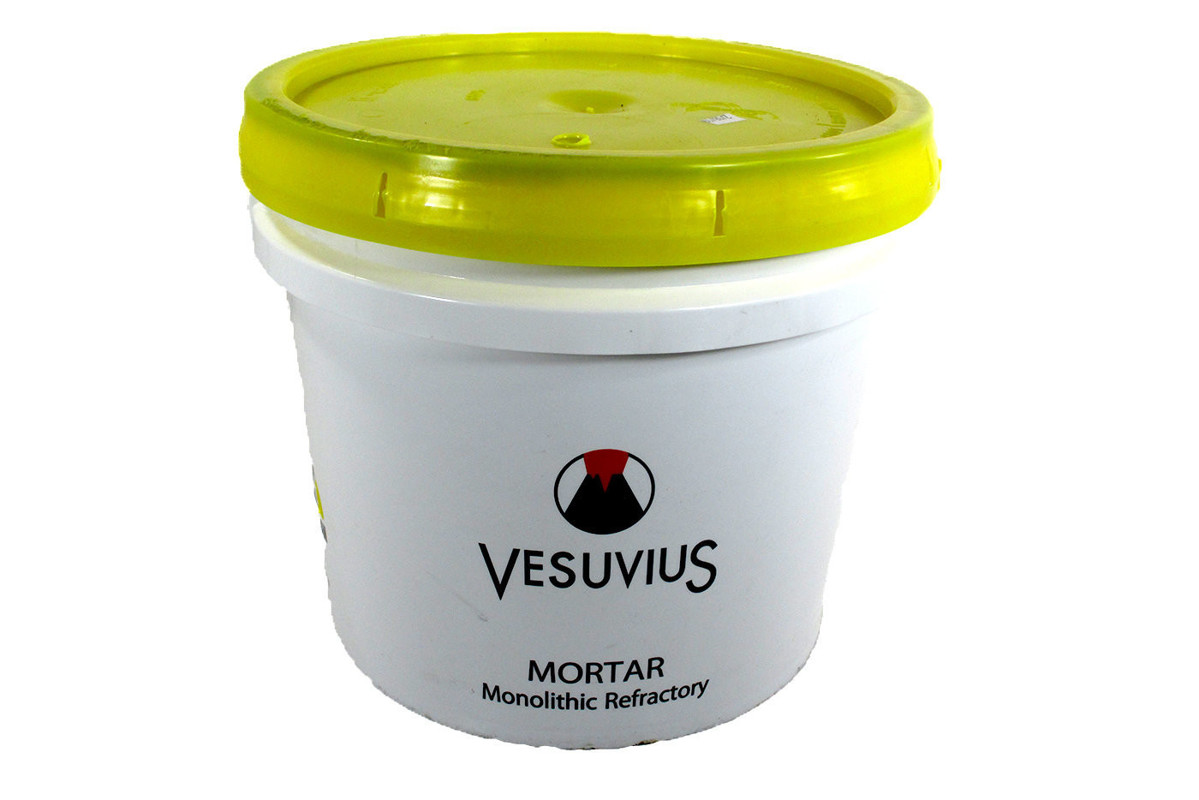Refractory Products
Refractory products are products that insulate your boiler from thermal stress and keep the heat where it is supposed to go. We stock many items from refractory patching products, blanket insulation, fire bricks, and castable or rammable refractory.
Due to weight and purchase minimums, there is a lot of product that we stock that isn't listed. We can provide castable refractory by the bag as well as full boiler projects worth of firebrick and liner or throat tiles. Please contact us with your specific needs and we can send you a quote!

What is a Refractory Product & What is its function?
Refractory materials are the heat shields of your boiler’s fire side, helping to focus the heat where it should go while protecting exposed metal in the furnace from thermal stress. Refractory materials come in several forms, but they all have one thing in common: they insulate very well, and don’t transfer heat.
Refractory Keeps The Heat Where It Belongs
Boilers are made of metal, because metal is not only strong, it is also an efficient heat transfer medium. While most of the metal surfaces in a boiler’s fire side are used to transfer heat to the water side, there are some surfaces -- such as furnace doors and access ports -- that are not used for heat transfer. These surfaces must be protected from excess heat, so that the heat energy doesn’t build up and cause thermal stress that can cause weakness and cracking. Refractory is used to shield these non-transferring surfaces by insulating them from the heat.
Because of its heat insulating properties, refractory material is also used around a burner in the throat of the fire tube to help focus the heat from a burner so it can work more efficiently, and not be absorbed too early by the water side.
Different Types of Refractory Products & How to Choose
Refractory materials are available in many forms, depending upon where they’re located in the furnace, and what they’re used for.
Refractory Anchors form the structure to which refractory attaches. This prevents the refractory from shifting as it expands and contracts.
Brick Refractory comes in pre-cast blocks which are arranged and sealed together.
Sheet Refractory is installed in pre-cast sheets.
Castable or Rammable Refractory is poured in place and allowed to harden in a designated shape.Patching Materials are used to repair small cracks or holes in the refractory. NOTE: Any holes larger than your fist should be repaired by a professional.
The Role Refractory Products Play in a Boiler
Refractory protects metal components that don’t have the ability to transfer heat anywhere else. If a surface inside the fireside has nowhere to send its heat, it will undergo thermal stress and begin to weaken. Refractory material insulates against heat, keeping the metal from becoming fatigued.
What is the Effect of Bad Refractory Products?
If refractory material begins to fail, it will develop cracks and possibly discoloration. If these cracks and damaged areas are not repaired, heat will escape through to the metal surfaces beyond the refractory. This will cause thermal stress. The uneven heating will also cause expansion and contraction, which will cause the cracks in the refractory surface to grow over time.
Some discoloration on a refractory surface is normal, because the chemical washes and coatings on the refractory’s outer surface used during installation can change color over time.
Things to Consider About Refractory Products:
- Refractory products are susceptible to thermal shock if their temperature changes too quickly. This can happen if extremely cold air is suddenly introduced into the fireside, or if a boiler is heated or cooled too quickly during startup or shutdown. Thermal shock can cause cracks and other damage to the refractory.
- Regular refractory inspection is important to the safe operation of any boiler. Any cracks or gaps can let heat through, shortening the life of the boiler or causing a burn hazard.
- Any large holes or cracks in the refractory (larger than your fist) should be patched by a professional to preserve safety and efficiency. A misapplied patch can create a dangerous situation, and lead to greater refractory damage.
- WARE also sells a wide range of gaskets and blanket materials for your boiler’s fireside and waterside, for complete refractory protection and heat insulation.
Helpful Resources
Relevant WARE Videos on Refractory Product
What Refractory Does in a Boiler
Importance of Refractory around the Burner
The Difference between Wetback and Dryback Boilers
Inspecting the Rear Boiler Door Refractory
Shocking Steam Boiler Refractory
Explore over 750+ explanatory videos on boilers and boiler systems on our Youtube channel. Our videos can help you quickly grasp complex boiler topics. Watch more here!
Relevant WARE Blog Articles on Refractory Product
How to Repair Your Boiler Refractory After it Gets Shocked (And When to Call a Professional)
Boiler Open and Close: Preparation and Tips
Annual Steam Boiler Open and Close
A Quick Scan of Flame Scanners
Our informative and educational blog content can help you gain a deeper understanding of the boiler room. Read more here!
Technical Documents
Refractory Product FAQ
What’s the difference between a wetback and a dryback boiler?
In a dryback boiler, the heat exits the waterside before being redirected for another pass through the firetubes. Consequently, dryback boilers have a rear wall that is lined with refractory. In a wetback boiler, the heat is always surrounded by water, even as it changes direction for another pass. So even the rear wall is helping to convert water into steam.
Are there any advantages to a dryback boiler?
Dryback boilers are engineered for better water circulation, as they have the fire side and water side more compartmentalized.
Are there any advantages to a wetback boiler?
Wetback boilers are more efficient than dryback boilers, because more surface area is used to transfer heat to the water in the boiler.